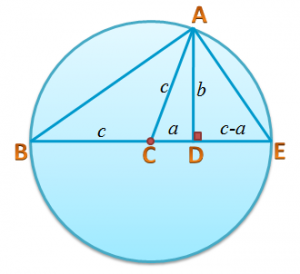Understanding the Meaning of Correspondence
In Geometry, two objects are congruent if they have the same size and shape. Two triangles drawn on a piece of paper are congruent if we can cut them out with scissors, and superimpose them to fit exactly, that is, without gaps or overlaps. If the triangles fit exactly, the corresponding parts are the parts that coincide. Consequently, corresponding parts of congruent triangles are congruent. Therefore, if two triangles are congruent, then their corresponding angles are congruent and their corresponding sides are also congruent.
In the figure above, if we superimpose the two triangles, will coincide with
and
will coincide with
. Hence
and
are corresponding sides and
and
are corresponding angles. » Read more


